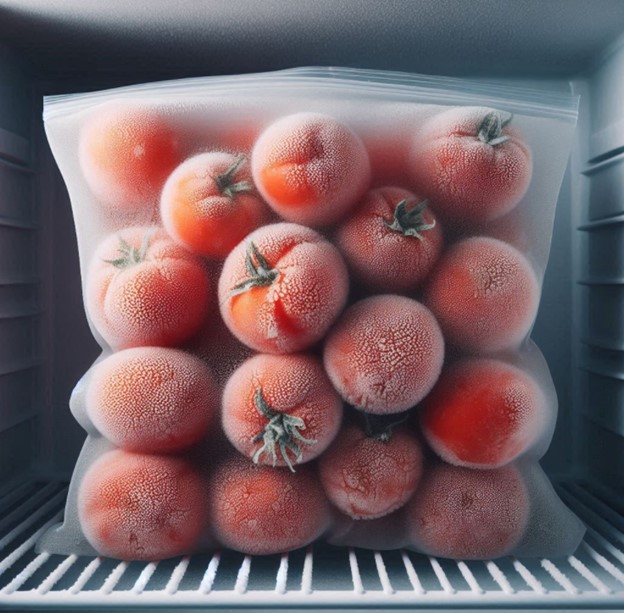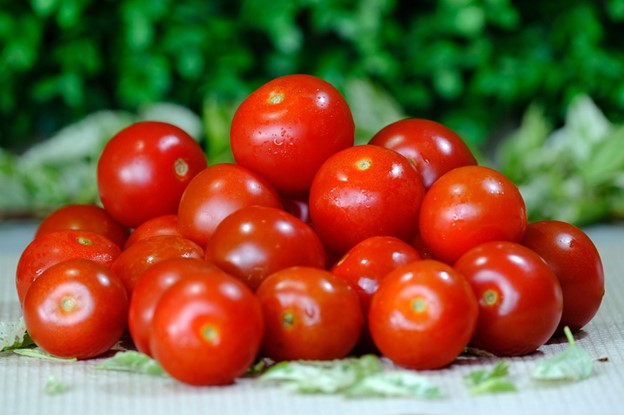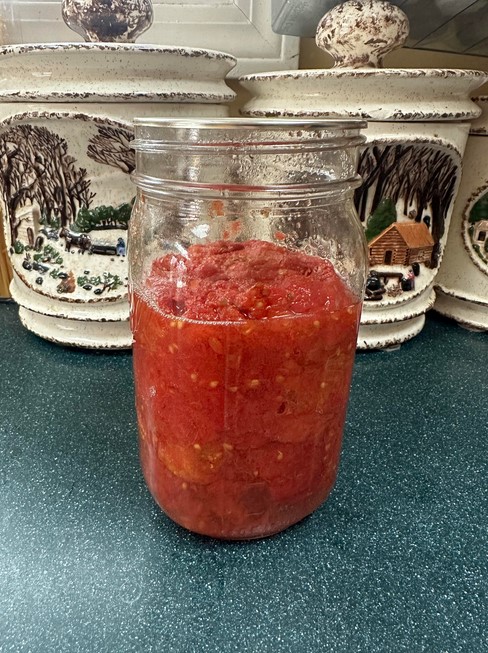Freezing tomatoes is an excellent technique for preserving the juicy tomatoes for long-term use.
However, these vibrant red gems do not last well in the freezer for an indefinite period, since their flavor and texture begin to deteriorate gradually over time. Nevertheless, freezing will allow you to savor the taste even during the off-season.
But to make sure the frozen tomatoes last long, you need to catch hold of some effective strategies for extending the shelf life of frozen tomatoes.
Frozen tomatoes are highly likely to start degrading their taste and texture after 12 months, but they will remain safe for consumption beyond this period even if their quality gets compromised.
What Is The Shelf Life Of Frozen Tomatoes?
Table of Contents

Frozen tomatoes generally last between 8 to 12 months if they are stored properly in the freezer with an ideal storage temperature of 0 degrees Fahrenheit or (-18 degrees Celsius) or lower.
However, proper storage techniques also play a vital role in extending the shelf life, as it is known to affect both the texture and taste.
Vacuum sealing is an excellent way to extend the shelf life of frozen tomatoes. It can last up to 12-16 months if packed properly, but the taste may get compromised over time.
But remember, frozen tomatoes are best when used within 12 months. However, they remain safe for consumption beyond this period even though their quality and flavor decrease with time.
Also, read: How To Thaw Frozen Tomatoes? [Complete Guide]
Factors Affecting The Shelf Life of Frozen Tomatoes

Freezing your tomatoes and extending their shelf life depends on a lot of factors, and some of those are:
1. Freezing Method
2. Storage Conditions
3. Freezing Time
4. Tomato Variety
5. Handling and Preparation
6. Temperature Consistency
7. Moisture Control
8. Packaging Type
Preservation Techniques For Frozen Tomatoes
Here are some of the best techniques for preserving frozen tomatoes effectively:
Freeze Whole Tomatoes

In the case of preserving whole tomatoes, always select ripe, firm, and unblemished tomatoes. Then, wash those thoroughly under the running water to remove the dirt, bacteria, or any other residue.
Next, remove the stems, pat them dry with a towel, and immediately place them on a baking tray to prevent the tomatoes from sticking.
Now, place the tray in a freezer for a few hours until it gets frozen completely, and then store it in a freezer bag or an airtight container.
Remove excess air from better preservation techniques and then label the containers at 0 degrees Fahrenheit or (-18 degrees Celsius).
Chopped Or Diced Tomatoes

Avoid choosing overripe tomatoes and select tomatoes without any blemishes. Wash the tomatoes thoroughly and remove the stem end and core.
If you prefer freezing skinless diced tomatoes, then you need to blanch the tomatoes for approximately a minute and then transfer them immediately to a bowl of ice-cold water.
After transferring the tomatoes to ice-cold water, gently remove the skin and cut the tomatoes into small and even pieces. Then, divide the diced tomatoes into little portions and freeze them in ice cube trays or even in freezer bags.
Remember to flatten the freezer bags so that you can make more room for the tomatoes to squeeze out the excess air.
Finally, label each portion of the diced tomatoes with the freezing date and ensure you use them within 8-12 months for the best flavor and quality.
To know the exact way of making tomato soup from frozen tomatoes, take a look at this detailed guide.
Blanching Tomatoes

Blanching the tomatoes before freezing will improve the texture and color of the tomatoes and will also help you remove the tomato skins. It is also an excellent preservation technique.
Before you go ahead with the process of blanching, rinse the ripe and firm tomatoes thoroughly under running water and remove the remaining dirt or residue along with the stems.
For blanching the tomatoes, boil a large pot of water, put the tomatoes carefully inside the boiling water, and let it boil for around a minute.
Then, quickly remove the tomatoes from the pot of boiling water and transfer them to a bowl of ice-cold water to stop the cooking process.
Now, allow the tomatoes to cool for around 2 minutes, and then gently remove the loosened tomato skins. You can also take the help of a paring knife to peel the remaining tomato skins.
Now, use whole, chopped, diced, or pureed tomatoes for freezing purposes. Take the help of a freezer-safe container or bags for packaging and then freeze the tomatoes.
Remove the excess air from the bags and label the containers by storing them in small batches for future use.
Pureed Tomatoes

For freezing tomato puree, select ripe, firm, and blemish-free tomatoes. Roma, plum, or beefsteak tomatoes are the best choices since they have less water content along with fewer seeds and help you to make a thick puree.
Remove the visible dust or any residue from the tomatoes by washing them in running water. Pat them dry and then trim the stems and core if required.
To make a smooth tomato puree, peel the skins off the tomatoes and then blanch them until the skin loosens. After the blanching process, transfer the tomatoes to a bowl of ice-cold water to stop the cooking process.
But if you require a coarse texture, then you can easily skip this step and puree the tomatoes along with the skin by blending them in a food processor or blender.
Use a strainer to remove the seeds or the remaining skin pieces and add a pinch of salt or herbs for using it in the puree.
Now, pour the tomato puree into ice cubes by keeping an inch of headspace so that it can have some room for expansion. Pop out the ice cubes once they are frozen and then transfer them into freezer bags or any other containers.
Label the containers with the freezing date and store them in a freezer at optimal temperature so that they can later be used for making pasta sauce, curries, casseroles, or even pizzas.
Here’s a detailed guide that deals with the best ways of storing cherry tomatoes, check it out!
Storage Recommendation For Frozen Tomatoes
Below we have discussed some effective storage recommendations that will help you maximize the shelf life of frozen tomatoes, and those are:
1. Always use freezer-safe, airtight containers or freezer bags while freezing.
2. Do not forget to squeeze out the excess air from the sealed bags before sealing.
3. Wash and dry the tomatoes before freezing.
4. Do not forget to label the containers or bags along with the freezing date for your convenience.
5. Remember the optimal storage temperature is 0 degrees Fahrenheit or (-18 degrees Celsius).
6. Freezing in smaller portions or batches will make the thawing or cooking process easier.
Final Words
So, if you’re looking forward to preserving the frozen tomatoes and enjoying the bumper crop even after their peak season, then freezing is one of the most effective solutions to savor the delicious taste.
Go ahead and preserve these red little gems and enjoy them later!
Leave a Reply